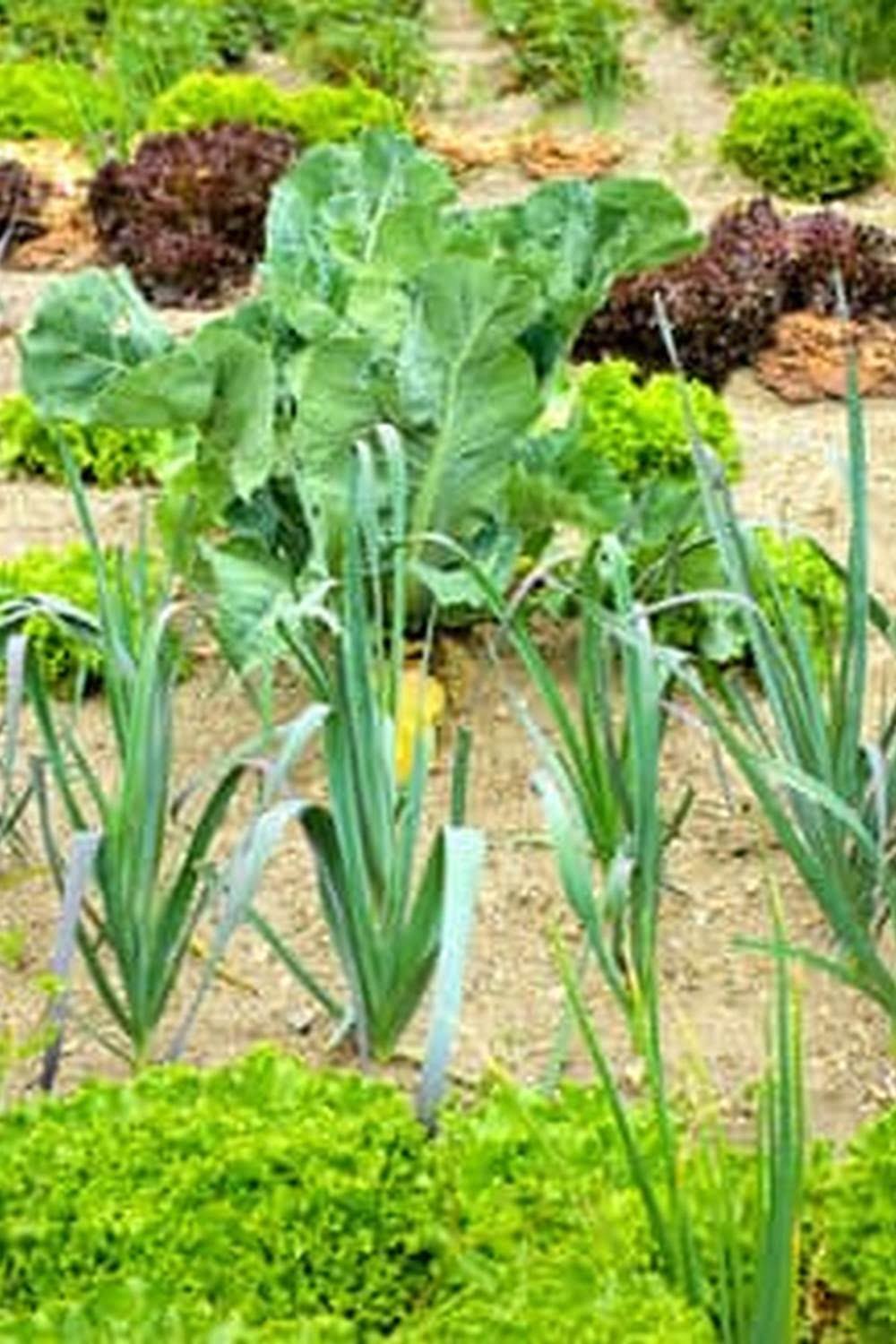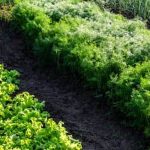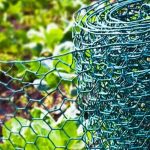Washington state vegetable gardening offers unique opportunities and challenges due to its diverse climate and soil conditions. Whether you’re a seasoned gardener or a beginner, understanding the specific needs of this region is crucial for a successful harvest. From choosing the right vegetables to dealing with pests and diseases, this comprehensive guide will provide valuable insights into vegetable gardening in Washington State.
When it comes to Washington state vegetable gardening, selecting the right vegetables is essential for a bountiful harvest. Understanding which crops thrive in the region’s climate and soil conditions is key to a successful garden. Additionally, taking into account the wet winters and dry summers characteristic of the area can greatly impact plant selection and overall garden maintenance.
Furthermore, Washington’s diverse microclimates require an understanding of soil and weather conditions specific to each location. From the cool maritime climate of the western coast to the continental climate of the east, knowing how these factors affect your garden will help you make informed decisions when starting your vegetable garden. Whether you’re in Seattle or Spokane, proper preparation will lead to a thriving garden throughout the growing season.
Choosing the Right Vegetables for Washington’s Climate
When it comes to choosing the right vegetables for Washington State’s climate, it’s important to consider the unique weather patterns and environmental conditions of the region. The state of Washington experiences a diverse climate, ranging from the rainy, temperate climate of the western region to the drier, warmer climate of the eastern part of the state. This diversity means that there are specific vegetables that thrive in different parts of Washington.
In Western Washington, where the climate is mild and moist, cool-weather crops such as lettuce, kale, broccoli, carrots, and peas tend to do well. These vegetables are able to withstand the frequent rainfall and lower temperatures characteristic of this region. On the other hand, in Eastern Washington where summers are hotter and drier, heat-tolerant vegetables like tomatoes, peppers, cucumbers, squash, and melons are better suited for the climate.
Understanding these regional differences is crucial when planning a vegetable garden in Washington State. It’s also important to consider microclimates within your own garden space. Factors such as elevation, proximity to bodies of water, and even urban heat islands can create variations in temperature and precipitation that can impact which vegetables will thrive best.
| Vegetables for Eastern Washington | Vegetables for Western Washington |
|---|---|
| Tomatoes | Lettuce |
| Peppers | Kale |
| Cucumbers | Broccoli |
| Squash | Carrots |
Understanding the Soil and Weather Conditions in Washington State
When it comes to vegetable gardening in Washington State, it is crucial to understand the unique soil and weather conditions of the region. The state’s diverse climate ranges from mild coastal areas to arid regions, and this can greatly impact the success of your garden.
One important factor to consider is the type of soil in your area. In Western Washington, the soil tends to be acidic and well-draining, making it suitable for a wide variety of vegetables such as lettuce, broccoli, and cabbage. On the other hand, Eastern Washington has alkaline soil with lower organic matter content, which may require additional amendments like compost or organic matter to improve its fertility.
In addition to soil considerations, Washington State is also known for its varying weather patterns. The western part of the state experiences mild temperatures and high precipitation, while the eastern side is more arid with hot summers and cold winters. It is essential for gardeners to select vegetable varieties that are well-suited for these different climates in order to ensure a successful harvest.
| Western Washington | Eastern Washington |
|---|---|
| Mild temperatures | Arid climate |
| High precipitation | Hot summers and cold winters |
By taking into account both soil type and regional climate variations, you can make informed decisions about which vegetables will thrive in your specific location within Washington State. This knowledge will set you up for gardening success and a bountiful harvest despite the challenges posed by the state’s unique environmental conditions.
Tips for Starting a Vegetable Garden in Washington State
Starting a vegetable garden in Washington State can be a rewarding and fulfilling experience. Whether you are a beginner or an experienced gardener, there are some important tips to keep in mind when starting your own vegetable garden in this region.
Choose the Right Location
One of the first steps in starting a vegetable garden in Washington State is to choose the right location. Look for a spot that receives plenty of sunlight and has good drainage. Consider factors such as proximity to water sources and protection from strong winds.
Prepare the Soil
Before planting your vegetables, it’s important to prepare the soil. Washington State has diverse soil types, so it’s essential to test your soil to determine its pH levels and nutrient content. Adding organic matter such as compost or aged manure can help improve soil quality and provide essential nutrients for your plants.
Select the Right Vegetables
When starting a vegetable garden in Washington State, it’s crucial to choose vegetables that are well-suited to the region’s climate and growing conditions. Some vegetables that thrive in Washington State include tomatoes, potatoes, carrots, lettuce, kale, and broccoli. Be sure to consider factors such as frost dates and average temperatures when selecting which vegetables to plant.
By following these tips for starting a vegetable garden in Washington State, you can set yourself up for success and enjoy a bountiful harvest of fresh produce throughout the growing season. With proper planning and preparation, you can create a thriving vegetable garden that will provide you with nutritious and delicious homegrown food.
Maintaining and Caring for Your Vegetable Garden in Washington State
Once you’ve established your vegetable garden in Washington state, it’s important to maintain and care for it properly to ensure a successful harvest. Here are some key tips and strategies for taking care of your garden in this specific climate:
1. Watering: In Washington state, the weather can be quite variable, with some regions experiencing drought conditions at certain times of the year. It’s important to water your vegetable garden appropriately, providing sufficient moisture without overwatering. Consider investing in a soaker hose or drip irrigation system to deliver water directly to the base of your plants.
2. Mulching: Adding a layer of mulch around your vegetable plants can help retain soil moisture, suppress weeds, and regulate soil temperature. Organic mulches such as straw, wood chips, or compost can also improve soil structure and fertility over time.
3. Fertilizing: Conduct a soil test to determine the nutrient levels in your garden soil, and then amend as needed with organic fertilizers or compost. Washington state vegetable gardening often benefits from the use of slow-release fertilizers, which provide a steady supply of nutrients to your plants throughout the growing season.
4. Pruning and maintenance: Regularly inspect your vegetable plants for any signs of disease or pest infestations, and take appropriate action if necessary. Additionally,laten pruning may be required for certain types of vegetables such as tomatoes or peppers to improve air circulation and reduce the risk of fungal diseases.
By following these maintenance tips for your vegetable garden in Washington state, you can help ensure a bountiful harvest despite the unique climate challenges that this region presents.
Dealing With Pests and Diseases Specific to Washington State
When it comes to washington state vegetable gardening, one of the biggest challenges that gardeners face is dealing with pests and diseases that are specific to the region. However, by taking certain preventative measures and being proactive in monitoring your garden, you can minimize the risk of infestations and keep your plants healthy.
Some common pests that vegetable gardeners in Washington State may encounter include aphids, spider mites, cabbage worms, and powdery mildew. These pests can damage your crops and reduce the yield of your harvest if not addressed properly. It is important to regularly inspect your plants for any signs of pest infestation, such as holes in leaves or discoloration, and take swift action to eliminate the problem.
To effectively deal with pests and diseases in your Washington State vegetable garden, consider implementing the following strategies:
- Use natural predators: Introduce beneficial insects such as ladybugs or lacewings to help control pest populations in your garden.
- Practice crop rotation: Rotate your crops each season to prevent the build-up of soil-borne diseases and disrupt the life cycle of pests.
- Proper watering: Water at the base of plants early in the day to prevent creating a damp environment that can promote fungal diseases.
- Select disease-resistant varieties: Choose vegetable varieties that are known to be resistant to common diseases in Washington State, such as powdery mildew-resistant squash or blight-resistant tomatoes.
By incorporating these tactics into your gardening routine, you can effectively mitigate the impact of pests and diseases on your vegetable garden in Washington State. It is important to stay informed about specific pest and disease challenges in your area and be proactive in implementing preventative measures to ensure a successful harvest.
Harvesting and Storing Vegetables in Washington State
When it comes to harvesting your vegetables in Washington State, timing is crucial. Each type of vegetable has a different harvesting window, so it’s important to know when your crops are ready. For example, tomatoes should be harvested when they are fully colored and firm, while potatoes are ready once the tops have died back.
To ensure the best flavor and quality, it’s best to harvest vegetables in the morning before the heat of the day sets in. This is especially important for leafy greens and herbs, as they can wilt quickly in hot temperatures.
Once you’ve harvested your vegetables, proper storage is key to preserving their freshness. For root vegetables like carrots and beets, remove the leafy tops before storing them in a cool, dark place. Leafy greens should be washed and dried thoroughly before placing them in airtight containers or bags in the refrigerator.
For longer-term storage, consider canning or pickling some of your harvest. This can extend the life of your vegetables well beyond their normal shelf life. Additionally, some vegetables like onions and garlic can be braided together and hung in a cool, dry place for extended storage.
In addition to standard storage methods, there are many ways to preserve your harvest for enjoyment throughout the year. Canning, freezing, pickling, and drying are all effective methods for extending the life of your fresh produce. By properly preserving your bounty from your Washington State vegetable garden, you can enjoy the fruits of your labor long after the growing season has ended.
Community Resources and Support for Vegetable Gardeners in Washington State
In conclusion, Washington State vegetable gardening offers a unique and rewarding experience for gardeners. With its diverse climate and soil conditions, it is important to choose the right vegetables that thrive in this region. Understanding the soil and weather conditions is crucial for successful gardening, as well as following helpful tips for starting and maintaining a vegetable garden in Washington State.
One of the keys to successful vegetable gardening in Washington State is being proactive in dealing with pests and diseases specific to the region. By implementing preventative measures and staying informed about common issues, gardeners can help protect their crops and ensure a bountiful harvest. Additionally, learning about harvesting and storing techniques for vegetables in Washington State will help prolong the life of your produce.
Finally, taking advantage of community resources and support is essential for vegetable gardeners in Washington State. Whether it’s joining a local gardening club or seeking advice from experienced growers, these resources offer valuable knowledge and encouragement. By connecting with fellow gardeners, beginners can learn from others’ experiences and establish a network of support for their own gardening endeavors. Overall, vegetable gardening in Washington State is an enriching activity that brings communities together while providing fresh, locally-grown produce.
Frequently Asked Questions
When Should I Start a Vegetable Garden in Washington State?
In Washington State, the best time to start a vegetable garden is typically in late February or early March. This allows for the ground to thaw and the weather to become more conducive to planting.
What Vegetables Are Easy to Grow in the Pacific Northwest?
Some of the vegetables that are easy to grow in the Pacific Northwest include peas, lettuce, kale, carrots, beets, and radishes. These vegetables tend to do well in the cooler, moister climate of the region.
Is Washington State a Good Place to Garden?
Washington State is indeed a good place to garden despite its reputation for being rainy. The state’s climate provides for a long growing season and fertile soil, making it ideal for growing a wide variety of vegetables, fruits, and flowers. The mild temperatures also make it easier to sustain a garden throughout much of the year.

If you’re looking to get into vegetable gardening, or are just looking for some tips on how to make your current garden better, then you’ve come to the right place! My name is Ethel and I have been gardening for years. In this blog, I’m going to share with you some of my best tips on how to create a successful vegetable garden.





